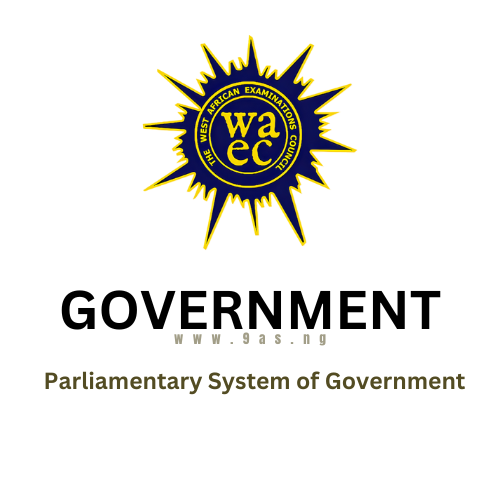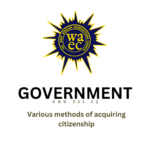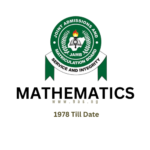THEORY
1. Describe the role of the cabinet in government
2. State the characteristic features of the cabinet system that distinguish it from presidential system.
3. Describe the functions of the Prime Minister in a cabinet system of government.
4. Identify six features of a Parliamentary system of government.
5. Define parliamentarianism
6. Identify four differences between parliamentary and presidential systems of government
OBJECTIVES
1. In a parliamentary system, the executive is weak because it is
A. accountable to parliament.
B. responsible for its own actions.
C. headed by a prime minister.
D. the head of state that controls the government.
2. A major feature of the parliamentary system of government is that
A. members of the executive are also members of the legislature.
B. the head of state is also the head of government.
C. there is clear-cut separation of powers.
D. the constitution cannot be amended.
3. Carpet-crossing is a characteristic of
A. monarchical system.
B. cabinet system.
C. presidential system.
D. unitary system.
4. In the parliamentary system of government, the ceremonial head of state is the
A. Chief Justice.
B. Prime Minister.
C. President.
D. Speaker.
5. Official opposition is a feature of
A. Parliamentary system.
B. Totalitarian system.
C. Nazism.
D. Fascism.
6. Which of the following is true of a parliamentary system of government?
A. There is an Executive President.
B. Fusion of powers is discouraged.
C. Collective responsibility is emphasized.
D. The Prime Minister is the head of the judiciary.
7. A notable feature of cabinet system of government is
A. collective responsibility.
B. the separation of powers.
C. violation of human rights.
D. impeachment of the executive.
8. A parliamentary-cabinet system of government is practiced in
A. Canada.
B. Nigeria.
C. the Soviet Union.
D. all European countries.
9. Which of the following is a disadvantage of collective responsibility in a cabinet system of
government?
A. Ministers are removed indiscriminately.
B. It kills individual minister’s initiatives.
C. The system is difficult to operate.
D. The Prime Minister is blameless.
10. A characteristic of the Parliamentary System is that
A. separation of powers is not strictly observed.
B. the prime minister combines the executive and ceremonial functions.
C..the president can dismiss any minister without much hindrance.
D. the ministers are responsible Individually to the president.
11. Parliamentary supremacy implies all the following except that
A. there is no legal limitation to the authority of parliament.
B. the sole right of law making belongs to parliament.
C. parliament can extend its own life.
D. the power of parliament is over and above all other powers, even that of the people.
12. The head of the executive branch in parliamentary
system is called the
A. Senate President.
B. Majority Leader.
C. President.
D. Prime Minister.
13. In a parliamentary system of government, the head of government is usually
A. selected by the Council of State.
B. elected by the Supreme Court.
C. the Majority Leader in the Legislature.
D. the Head of State.
14. Which of the following systems of government has bicephalous executive?
A. Parliamentary.
B. Monarchical.
C. Unitary.
D. Totalitarian.
15. The head of government in a parliamentary system is the
A. President.
B. Governor.
C. Prime Minister.
D. Chancellor.
16. Parliamentary government is different from presidential government because
A. it has a flexible constitution.
B. it is based on a unitary constitution.
C. of the existence of Head of Government.
D. of the existence of a ceremonial Head of State.
17. The principle that any government that loses the support of the legislature resigns is practised in a
A. unitary system.
B. monarchical system.
C. presidential system.
D. cabinet system.
18. In a parliamentary system of government a vote of no confidence means expression of disapproval of
A. government’s general policies.
B. the activities of the court of law.
C. the opposition’s methods of campaign.
D. the activities of trade unions.
19. In a parliamentary system of government, the majority party
A. executes its own laws only.
B. legislates all binding laws.
C. makes law for the nation.
D. forms the government.
20. The political effect of the removal of the Prime Minister under a parliamentary system of
government is
A. a general election.
B. the suspension of the ministers.
C. the suspension of the constitution.
D. the dissolution of the court of law.
21. The Chief Executive in a parliamentary system of government is known as the
A. President.
B. Speaker.
C. Prime Minister.
D. Governor-General.
22. A governmental system where the head of state is distinct from the head of government is called
A. presidential.
B. unitary.
C. parliamentary.
D. republican.
23. In a republican parliamentary system of government, the ceremonial Head of State is the
A. Chief Justice.
B. Prime Minister.
C. President.
D. Party Leader.
24. Vibrant opposition parties in parliament help to
A. threaten democracy.
B. strengthen democracy.
C. safeguard independence.
D. protect sovereignty.
25. The passing of a vote-of-no-confidence is a method of removing the Executive in a
A. parliamentary system of government.
B. military system government.
C. presidential system of government.
D. confederal system of government.
26. In a parliamentary system of government, the legislature and executive are fused to ensure
A. supremacy of the ruling party in administering the state.
B. smoothness in the administration of the state.
C. the constitution is read in parliament at all times.
D. the judiciary consults parliament before ruling on cases.
27. Executive power in a cabinet system of government is vested in the
A. legislature.
B. judiciary.
C. Civil service.
D. Council of Ministers.
28. An opposition party which sees itself as “government-in-waiting” is called
A. shadow government.
B. caretaker government.
C. national government.
D. responsible government.
29. What is the term given to the action of discounting a session of a parliament or other legislative
assembly without dissolving?
A. adjournment
B. postponement
C. prorogation
D. recess.
30. One major problem associated with the cabinet system of government is the
A. abuse of power
B. frequent change of government
C. large number of ministers
D. supremacy of the executive
31. In which system of government does the legislature pass a vote of no confidence in the government? A. Federal
B. Cabinet
C. De jure
D. Monarchical
32. One of the low points in the cabinet system of government is that, the
A. Prime Minister does not regard the Head of State
B. centre of power in the system is stable
C. divided loyalty of the cabinet ministers is strong
D. tenure of a government is always not stable.



